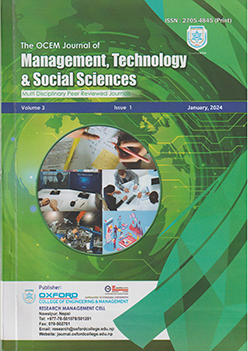
Migration, Remitance and Rural Livilihood Among the Household Member of the Annapurna Rural Municipality, Kaski
Mohan Prasad Sapkota1*; Dipak Sapkota2; Gaurav Adhikari3; Monika Sharma4 1Birendra Multiple Campus, Faculty of Management, Tribhuvan University 2MBA Scholar, Purbanchal University 3M. A. Sociology Scholar, Tribhuvan University *Corresponding Email: mohansapkota24@gmail.com
Abstract
The major portion of the Nepalese economy is based on agriculture. The country’s rural areas are home to almost 80% of the inhabitants, who are engaged in agriculture. People are compelled or forced to migrate due to a variety of circumstances including poverty, desperation, unfair resource distribution, and a lack of opportunity. This study’s major goal is to determine how remittances affect several socio-economic aspects of households both before and after they receive remittances. The Bhadaure, Tamagi village in Ward number 4 of the Annapurna Rural Municipality is the place where the current study was carried out. Only 50 respondents out of 200 migrants working abroad were chosen at random to make up the study’s sample. The research was conducted using a case study design, and basically quantitative data were gathered and SPSS software was used for data analysis. The objective of the study was to identify the impacts of remittances on the expenditure of migrant households and to compare the position of remittance holders before and after receiving remittances. The findings of the study highlighted the positive impact of remittance on the living standards of households. Many households were able to construct RCC buildings and buy land, which they were previously unable to do due to financial constraints. There was also an improvement in household assets, electronic goods, and services after receiving remittances. Moreover, the research showed that the health conditions of households had improved after receiving remittances. These findings indicate that remittance has a significant impact on the socioeconomic development of the study area, contributing to the improvement of the living standards and well-being of the households. Despite this, the government must ensure protection against labor exploitation and formulate appropriate policies for Nepalese laborers.
Keywords: economy, household, labor, migration, remittance
